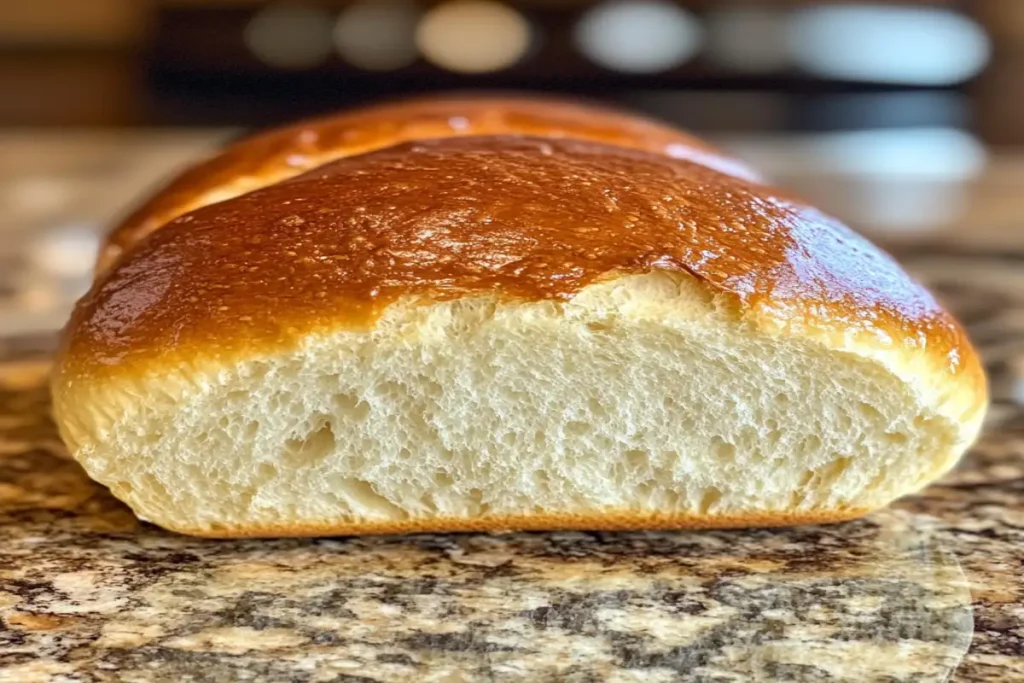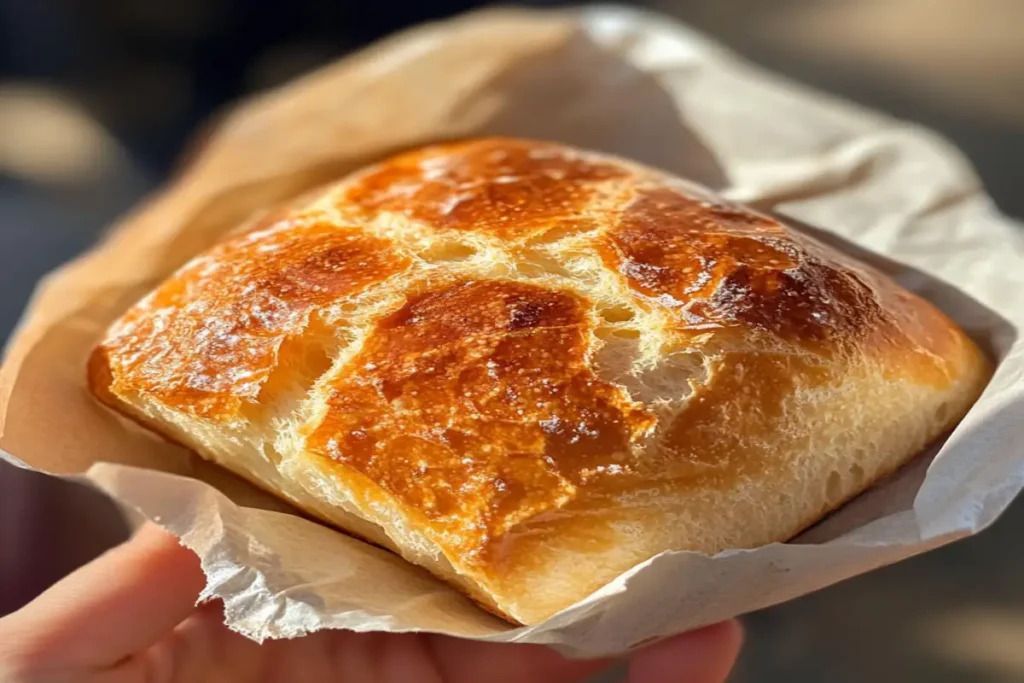Introduction: Understanding Moist Bread
What is the secret to moist bread? This question has intrigued bakers for centuries, as achieving perfect bread requires a delicate balance of ingredients, techniques, and baking conditions. Moist bread is not just a matter of taste; it’s also about texture and longevity. Dry bread can feel unappealing and crumbly, while moist bread retains its softness and structure, making every bite enjoyable. By focusing on the key factors that contribute to moisture, you can elevate your bread-baking skills and produce loaves that stay fresh for days.
The secret lies in understanding how different components interact during the baking process. From the type of flour used to the amount of liquid added, each step plays a critical role in creating the ideal bread texture. This guide will unravel the mystery of what is the secret to moist bread and provide actionable tips to improve your baking.
Why Is Moist Bread So Important?
When asking what is the secret to moist bread, it’s essential to first understand why moisture matters. Moist bread is not only more appealing to eat, but it also lasts longer. Dry bread, on the other hand, tends to stale quickly and loses its flavor. The moisture content helps maintain the bread’s softness and enhances its overall eating experience.
Moisture affects the crumb structure, creating a tender and elastic interior. Without sufficient hydration, bread can become dense and unappetizing. Moreover, moisture supports even baking, allowing the heat to penetrate the dough uniformly. This ensures a well-risen loaf with a golden crust and a fluffy interior.
In addition to texture, moisture enhances flavor. A well-hydrated dough allows ingredients like salt and yeast to distribute evenly, resulting in a balanced taste. Knowing what is the secret to moist bread helps you bake bread that satisfies both taste and texture.
Key Ingredients for Moist Bread
Understanding what is the secret to moist bread starts with identifying the right ingredients. Each component contributes to the overall moisture content and texture of your loaf:
- Flour: High-protein flours, like bread flour, absorb more water and create a chewy crumb.
- Liquids: Water and milk are essential for hydration, with milk adding richness.
- Fats: Butter, oil, or eggs enhance moisture retention and soften the crumb.
- Sweeteners: Sugar or honey locks in moisture and improves shelf life.
- Yeast: Proper fermentation creates air pockets, enhancing the texture.
The combination of these ingredients determines how moist your bread will be. Experimenting with ratios can help you achieve the perfect balance. By carefully selecting and measuring your ingredients, you can uncover what is the secret to moist bread and bake consistently delicious loaves.

The Role of Hydration in Bread Baking
Hydration plays a critical role in answering what is the secret to moist bread. The water content in your dough directly affects the final texture and softness of your bread. Hydration levels vary depending on the type of bread you are making. For example, sourdough requires a higher hydration percentage compared to sandwich bread.
Water activates gluten, the protein responsible for the elasticity and structure of bread. Without sufficient hydration, the gluten network cannot form properly, resulting in a dense and dry loaf. Conversely, too much water can make the dough sticky and difficult to handle.
To achieve optimal hydration:
- Measure liquids accurately.
- Use lukewarm water for better yeast activation.
- Adjust hydration based on humidity levels in your kitchen.
By mastering hydration, you can better understand what is the secret to moist bread and improve your baking outcomes.
How to Choose the Right Flour for Moist Bread
What is the secret to moist bread? Choosing the right flour is a significant factor. Different flours have varying levels of protein, which affects their water absorption and gluten development. Bread flour, for instance, contains more protein than all-purpose flour, making it ideal for achieving a moist and elastic crumb.
Whole wheat flour, while nutritious, absorbs more water and can lead to denser bread. To counter this, you can combine it with all-purpose or bread flour to strike a balance between health and moisture. Additionally, freshly milled flour tends to absorb water more effectively, contributing to a softer texture.
Tips for selecting the best flour:
- Check protein content on the packaging.
- Experiment with different flour combinations.
- Avoid old or stale flour, as it may lose its absorption capabilities.
Knowing how to choose the right flour provides clarity on what is the secret to moist bread, ensuring a superior baking experience.
The Secret of Adding Fat for Moisture
One often-overlooked answer to what is the secret to moist bread is the addition of fat. Ingredients like butter, oil, and eggs not only enrich the flavor but also improve moisture retention. Fat creates a tender crumb by coating the flour particles, slowing down gluten formation.
Butter adds richness and enhances the bread’s aroma, while vegetable oils contribute to a softer texture without altering the flavor significantly. Eggs, containing both fat and protein, improve structure and add moisture. Adding a small amount of fat to your dough can make a noticeable difference in the final product.
When incorporating fat:
- Add it after the initial mixing to avoid interfering with gluten development.
- Use room-temperature butter for even distribution.
- Measure carefully to prevent making the dough too greasy.
Understanding the role of fat is crucial to unlocking what is the secret to moist bread and achieving consistently soft loaves.

Does Sugar Make Bread More Moist?
A common query in discovering what is the secret to moist bread is the role of sugar. While sugar primarily adds sweetness, it also helps retain moisture. Sugar acts as a humectant, drawing and holding water in the dough, which results in a softer crumb and extended shelf life.
In addition to moisture, sugar feeds the yeast, promoting better fermentation and rise. However, too much sugar can disrupt the gluten structure and make the dough sticky. Balancing sugar with other ingredients is key to achieving the desired moisture level.
For added moisture:
- Use natural sweeteners like honey or molasses.
- Limit sugar to 2-3 tablespoons per loaf to avoid overpowering the flavor.
- Combine sugar with fats for enhanced softness.
Incorporating sugar thoughtfully helps answer what is the secret to moist bread, improving both taste and texture.
Step-by-Step Guide to Baking Moist Bread
Achieving moist bread involves following a precise process. Here is a step-by-step guide to mastering what is the secret to moist bread:
- Measure Ingredients Accurately: Use a digital scale for consistency.
- Activate Yeast Properly: Mix yeast with lukewarm water and a pinch of sugar to ensure it’s active.
- Mix and Knead the Dough: Combine ingredients thoroughly and knead until smooth and elastic.
- Hydrate Adequately: Adjust water content based on dough consistency.
- Proof in a Warm Environment: Allow the dough to rise in a humid, draft-free space.
- Shape Carefully: Avoid deflating the dough during shaping.
- Bake at the Right Temperature: Use an oven thermometer to ensure accuracy.
- Cool Properly: Let the bread cool completely to lock in moisture.
By following these steps, you can confidently address what is the secret to moist bread and bake perfect loaves every time.
The Importance of Proper Kneading and Proofing
Proper kneading and proofing are crucial when addressing what is the secret to moist bread. Kneading develops gluten, the protein network responsible for the structure and elasticity of bread. Without sufficient kneading, the dough will fail to trap air, resulting in a dense and dry loaf.
Proofing, or allowing the dough to rise, is equally important. It gives the yeast time to ferment, producing carbon dioxide that creates air pockets in the dough. These air pockets not only improve the texture but also contribute to a moist crumb.
To ensure proper kneading and proofing:
- Knead the dough until it is smooth and elastic.
- Perform a windowpane test to check gluten development.
- Let the dough rise in a warm, humid environment to prevent it from drying out.
Mastering these techniques will help you discover what is the secret to moist bread.
How Temperature Affects Bread Moisture
Temperature plays a pivotal role in determining what is the secret to moist bread. Both oven temperature and ambient temperature during proofing can significantly impact the bread’s final moisture content. Baking at too high a temperature can dry out the bread, while low temperatures may result in an undercooked and gummy loaf.
During proofing, warm conditions encourage yeast activity and prevent the dough from forming a dry skin. Using a thermometer can help ensure precise control over the baking and proofing process.
Tips for optimal temperature:
- Preheat your oven for even baking.
- Proof dough in a warm area, ideally between 75-85°F.
- Avoid opening the oven frequently, as this can alter baking temperatures.
By understanding how temperature influences baking, you can refine your approach to what is the secret to moist bread.
Tips for Storing Bread to Retain Moisture
Knowing what is the secret to moist bread also involves proper storage techniques. Bread that is not stored correctly can lose moisture quickly, becoming dry and stale. To retain freshness:
- Wrap bread in plastic wrap or foil to prevent air exposure.
- Store bread at room temperature for short-term use.
- Freeze bread for long-term storage, ensuring it is tightly sealed.
Avoid storing bread in the refrigerator, as this accelerates the staling process. Reheating frozen bread in the oven or toaster can help restore its moisture and texture.
By following these tips, you can prolong the freshness of your bread and understand what is the secret to moist bread beyond the baking process.
Common Mistakes That Lead to Dry Bread
When addressing what is the secret to moist bread, it’s helpful to avoid common mistakes that result in dryness. These include:
- Overbaking: Leaving bread in the oven too long removes excess moisture.
- Incorrect Hydration: Using too little water in the dough can lead to a dry texture.
- Skipping Proper Proofing: Insufficient rise time affects the crumb structure and moisture retention.
- Storing Bread Improperly: Exposure to air causes rapid moisture loss.
Identifying and correcting these mistakes ensures that your bread remains soft and enjoyable.
Creative Ways to Enhance Moist Bread: Add-ins and Toppings
Enhancing moisture doesn’t stop with basic ingredients. Creative add-ins and toppings can take your bread to the next level. Consider:
- Add-ins: Mashed potatoes, yogurt, or sour cream for extra moisture.
- Toppings: Brush the crust with melted butter or honey after baking.
- Mix-ins: Incorporate nuts, seeds, or dried fruits for added texture and flavor.
These additions not only improve the bread’s moisture but also enhance its overall appeal, contributing to what is the secret to moist bread.
FAQs: Troubleshooting Dry Bread
Why is my bread dry even after following the recipe?
This can happen due to overbaking, insufficient hydration, or using low-quality flour. Adjust water content and baking time to improve results.
Can I add moisture to already-baked bread?
Yes, reheating bread with a damp towel in the oven or microwave can help restore some moisture.
How do I keep bread moist for longer?
Store it in an airtight container and avoid refrigerating. Freezing is ideal for preserving moisture.
Conclusion: Achieving the Perfect Moist Bread Every Time
Mastering what is the secret to moist bread involves understanding every stage of the baking process, from ingredient selection to proper storage. By focusing on hydration, temperature, and techniques like kneading and proofing, you can create bread that is soft, flavorful, and long-lasting. Experiment with add-ins and learn from common mistakes to refine your skills and enjoy consistently moist bread with every bake.

